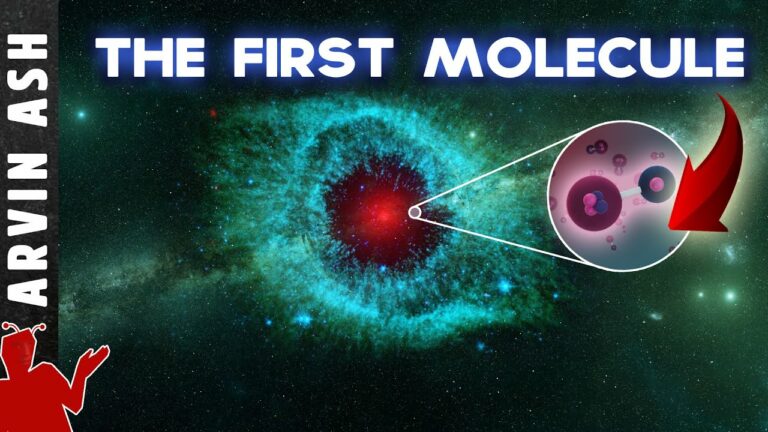In the grand tapestry of our universe, the formation of the first molecules represents a pivotal act in the theater of cosmic evolution. Just as the painter selects colors to form an exquisite landscape, primordial elements converged in a primordial milieu, giving rise to the basic building blocks of life. The journey from elementary particles to complex molecules is not just an account of chemical reactions but also a narrative woven through time, producing intricate and mesmerizing threads that constitute our very existence.
At the core of this evolutionary odyssey lies a fundamental question: How did the first molecules materialize from the chaotic dance of atoms? To navigate this intricate labyrinth, one must first consider the cosmic origins of elements, catalyzed by processes that have unfolded over billions of years. Within the cosmic crucible of stars, hydrogen and helium were forged—the very elements that would later join in robust unions, ultimately giving rise to more complex configurations.
With the sun as a stellar furnace fueling nuclear fusion, heavier elements like carbon, oxygen, and nitrogen emerged—each such element is akin to a brushstroke, enriching the canvas of life. Upon the cataclysmic demise of stars in supernovae—remarkably violent events—these elements were scattered across the cosmos, becoming part of the interstellar dust, the building blocks of future worlds.
As tiny particles coalesced under the relentless pull of gravity, they formed celestial bodies, including our Earth. The conditions on this nascent planet were tumultuous yet ripe for experimentation. Volcanoes belched gases; the atmosphere thickened, and cooling oceans pooled in craters—a veritable alchemical lab, brimming with potential.
Enter the primordial soup hypothesis, which posits that life began in Earth’s oceans, where a mix of organic compounds and energy sources catalyzed the formation of complex molecules. Imagine a bubbling cauldron where lightning cracked through stormy skies, infusing energy into simple molecules like methane and ammonia. This energy catalyzed reactions that allowed amino acids, the precursors to proteins, to emerge—molecules which straddle the line between simple and complex, much like the first tier of a high-rise building, supporting the structure that follows.
Further elucidation of the events leading to the formation of the first organic molecules brings us to the concept of abiogenesis— the process through which life arises naturally from non-living matter. Key beliefs suggest that molecular self-organization may have played a vital role. Through interactions swayed by environmental factors—such as temperature fluctuations, pH levels, and the presence of catalysts—simple molecules began to organize into structured, functional systems. It is here that one can visualize a symphony of molecular interactions, each joining the other in harmonious ensembles, akin to musicians tuning their instruments before a grand performance.
The subtle yet profound emergence of RNA, a molecule capable of self-replication, marks another milestone in this evolutionary chronicle. RNA, much like an astute emissary, is capable of transmitting genetic information, paving the way for the emergence of DNA. This transition from simple information carriers to the complex repository of life signifies a profound shift, much as a caterpillar transforms into a butterfly, undergoing metamorphosis to reveal unprecedented potential.
Another layer to this fascinating web is the role of environmental niches—specific ecological contexts where life could thrive and evolve. Hydrothermal vents on the ocean floor exemplify such a niche, where the interaction between hot, mineral-rich waters and cold, dark oceans catalyzed unique chemical reactions. In these extreme environments, molecules found new paths to complexity, assembling into structures reminiscent of the very first proto-cells, encapsulating essential molecules within lipid bilayers—analogous to a seed encased in its protective shell, prepared to sprout when conditions are favorable.
The interplay of chance and necessity plays a crucial role in this unfolding narrative. The formation of the first molecules was not merely a product of deterministic processes but a dance of serendipity, where randomness and order intertwined. Just like in evolution, where survival often favors the fittest—not merely the strongest, but those adept at adapting to changing circumstances—chemical evolution mirrored this ethos, wherein some molecules proved better suited for replication and stability, prevailing over their less favorable counterparts.
As these primitive molecules began to form more complex assemblies, they underwent an evolutionary process akin to that of biological organisms. Chemical selection gave rise to the emergence of protocells, precursors to true cellular life, which simplified the innate complexity of molecular interactions. This selective pressure facilitated the refinement of molecular elegance, introducing new functionalities and the ability to harness energy, akin to an artist mastering a new medium.
In conclusion, the origin of the first molecules is a profound saga of cosmic perseverance, elemental orchestration, and the relentless pursuit of complexity from simplicity. Every step on this journey, from the hearts of dying stars to the swirling oceans of young Earth, tells a tale of transient moments crystallized into lasting forms. Much like a symphony, which emerges from the delicate first notes played in an empty hall, the formation of these initial molecules created the conditions for the astonishing diversity of life that followed, culminating in the intricate biosphere we inhabit today. And as we delve deeper into our own molecular essence, we are reminded of our origins as descendants of centuries of cosmic evolution—an intricate dance unfolding since the dawn of time itself.












